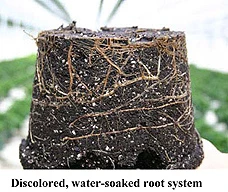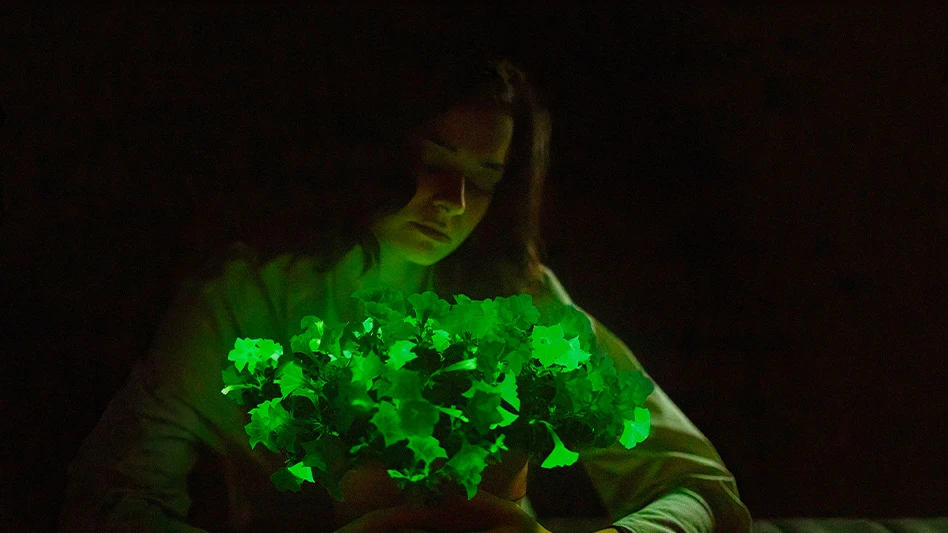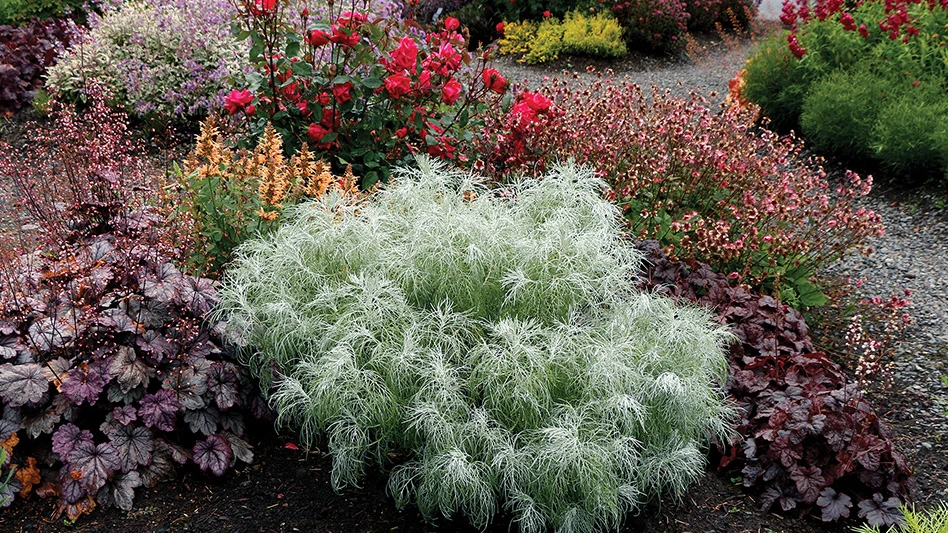
Univ. of Md. plant pathologist Karen Rane advises poinsettia growers that controlling pythium root rot on their plants takes an integrated approach. The best approach is to keep greenhouses clean of soil and debris, run plants on the dry side and maintain good fertility while keeping soluble salts at the proper level. Pythium is commonly found in soil and can enter the greenhouse in unsterilized growing media, used containers and on dirty tools and benches. Surface water sources including ponds and streams can also contain pythium. Irrigating plants with untreated water may introduce the pathogen to the crop. Rane said that applications of biological fungicides, such as Rootshield, early in the season can control root rot when the amount of pythium inoculums is low. If a grower has a history of pythium or root rot, fungicide drenches can help protect plants from infection.
Photo courtesy of Univ. of Md. Cooperative Extension
Latest from Greenhouse Management
- Essentially flourishing
- Farm, horticulture industry organizations file lawsuit against U.S. DOL for H-2A rule
- Leveraging AI to unlock the potential of yield forecasting for tomatoes
- American Floral Endowment launches $2.5 million fundraising campaign for Sustainabloom
- FMC, Envu complete sale of FMC’s Global Specialty Solutions business
- Sensocon releases long distance, long life wireless sensor package
- Registration for International Plant Trialing Conference now open
- USDA Deputy Secretary Xochitl Torres Small visits Dramm Corp.





